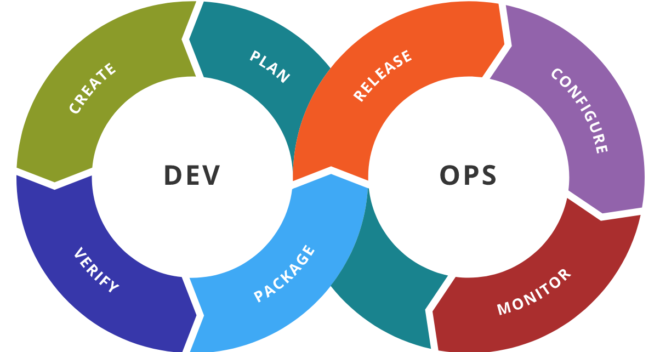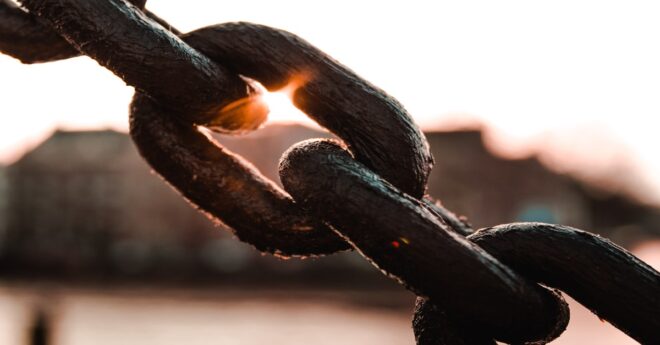![]()
Our interest grows along with the understanding and knowledge of the internet. The dark web is a perplexing and frequently misunderstood aspect of the internet. But what exactly is the dark web? What happens in this enigmatic, hidden area of the digital world?
As we investigate the dark web, we’ll learn about its inner workings and the technology that enables it. We’ll also look at the risks of using the dark web and the precautions you may take to protect yourself. So strap in for an eye-opening adventure into the heart of the dark web.
Untangling the Internet’s Layers
Let’s look at the internet’s various layers to better grasp the Dark Web:
- Surface Web: This is the section of the internet with which we engage on a daily basis, hosting sites such as Google, Facebook, and your favorite online stores. It’s just the top of the iceberg, and it’s all searchable.
- Deep Web: The deep web contains content that is not indexed by search engines. This domain includes your email inbox, online banking accounts, and personal databases. Don’t worry, it’s not a bad place; it’s just not as easily accessible as the surface web.
- Dark Web: If you go deeper, you’ll come upon the dark web. Access to this hidden section of the deep web needs special software, such as the Tor browser. The dark web, by purpose hidden, is unfortunately a hotbed for some illegal activity.
What exactly is the Dark Web?
The black web is a subset of the deep web, which includes all areas of the internet that regular search engines do not index. Private databases, password-protected websites, and other forms of secured content are examples of this. The dark web is a subsection of the deep web that is utilized for anonymous and frequently illegal activity. It is accessed with the use of special software, such as Tor or I2P, which anonymizes user activity and permits access to .onion websites that are not accessible through standard browsers.
Dark Web Organization:
The dark web is a collection of websites, forums, and online communities that are not connected to the mainstream internet. Traditional search engines do not index these sites since they use unique web addresses. The dark web’s structure is decentralized, with no centralized authority or governing body overseeing its operation. Because the dark web is decentralized, it is impossible for law enforcement and other agencies to monitor and regulate its operations.
The Dark Web’s Applications:
The dark web is frequently associated with illegal operations such as drug trafficking, illegal arms trade, and people trafficking. It is important to highlight, however, that the dark web has genuine applications. Whistleblowers, journalists, and activists, for example, can use it to communicate securely and anonymously in areas where free speech and the press are restricted. Individuals can also use the dark web to obtain information and services that are forbidden or restricted in their home country.
What Ignored the Difference Between Deep and Dark Web Misleads Users?
Many people mix up the deep web and the black web, although they are two separate realms. Users can be misled and put at risk if their differences are not understood. It is critical to understand these distinctions in order to utilize the internet safely and intelligently. Let us delve further for a better understanding:
Deep Web VS Dark Web: Scope
The Deep Web includes everything that search engines do not index. This means that it cannot be viewed using Google or other similar services. The Dark Web, on the other hand, is a small component of the Deep Web that is purposefully hidden. It is only accessible with specialist software such as The Onion Router (Tor).
Deep Web VS Dark Web: Operations
To access the dark web, no special web browser or protocol is required. The Tor browser, on the other hand, is required for accessing the dark web. Users keep their anonymity when surfing the dark web because the browser is encrypted. It’s important to note that black web URLs are not the same as regular online addresses.
Unlike the “surface web’s” “.com” and “.org” domains, the dark web’s typical site extension is “.onion.” This method restricts access to specific browsers and proxies on purpose. Furthermore, the addresses of dark web sites are notoriously difficult to remember.
Tor is the most well-known way to gain access to dark websites. The Invisible Internet Project (I2P) is another alternative. This decentralized anonymizing endeavor implements tactics similar to Tor. I2P acts as its own internet, allowing users to anonymously write and communicate.
Deep Web VS Dark Web: Size
Here’s an idea of how big these webs are. The deep web is 400 to 500 times bigger than the surface web. The dark web accounts for only 0.01% of the deep web and 5% of the entire internet.
Deep Web VS Dark Web: Applications
The deep and dark webs serve distinct functions. The deep web is used for a variety of lawful purposes, including:
- Search engines do not index databases and online libraries.
- Websites that require a password
- Articles with a paywall
- Websites and internal enterprise networks
- Personal websites that are not linked from other websites
The dark web, on the other hand, is frequently associated with unlawful activity since it allows users to access secret sites while remaining anonymous. Typical applications include:
- Purchasing and reselling illicit goods and services such as narcotics and guns
- Gaining access to unlawful items such as child pornography or stolen personal information
- Assisting in illicit acts such as human trafficking and money laundering
- Defending activists’, journalists’, and whistleblowers’ privacy
Deep Web vs. Dark Web: Security
The deep web is generally safe to use, and it is up to the owners of each hidden service to keep it that way. However, because of the rich personal information included in this web sector, scammers are aggressively targeting it.
As a result, excellent online hygiene is necessary for secure internet use.
Exploration of the dark web is usually risk-free. When downloading illicit content that may contain malware such as viruses, worms, or keyloggers, the risk increases.
Conclusion
The dark web is a complicated and frequently misunderstood aspect of the internet. While it is a haven for both legal and illicit activities, it is also a useful resource for journalists, activists, and others who need to communicate and exchange information without fear of repercussions. However, it is critical to be aware of the risks connected with utilizing the dark web and to take precautions. You may browse the dark web safely and securely by using a VPN, and encrypted communication tools, and avoiding dodgy links and downloads.
Understanding the dark web is vital in today’s digital world, whether you’re a curious internet user or a professional journalist or activist. You can protect yourself and ensure that you are using the dark web properly if you take the time to understand it and how it operates.



